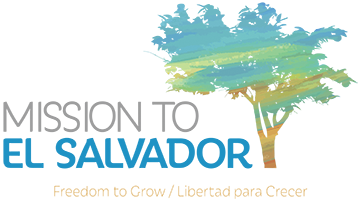A few weeks ago Tori and I had a truly beautiful experience on her class field trip. We went to a hacienda that allows visitors the opportunity to learn about the indigo-dye process. Back in colonial days, El Salvador was a major exporter of indigo dye for the world. This gave the land enough economic security to declare independence. Since then, times have changed and synthetics have taken over. We got to see how things used to be, and it is an experience I would recommend to anyone who visits El Salvador.
 The beautiful Hacienda San Juan Buenavista
The beautiful Hacienda San Juan Buenavista
 Indigo dye comes from this plant
Indigo dye comes from this plant
 It starts green and is pounded out from the plant. Tori is making an impression on a piece of fabric with the dye
It starts green and is pounded out from the plant. Tori is making an impression on a piece of fabric with the dye
 Next the green liquid is processed, and natural additives are added to produce the dye
Next the green liquid is processed, and natural additives are added to produce the dye
 El Salvador was one of the original world suppliers of indigo
El Salvador was one of the original world suppliers of indigo

 Lots of lovely designs…we learned how to use wax, tie-dye, and other methods to create these beautiful patterns
Lots of lovely designs…we learned how to use wax, tie-dye, and other methods to create these beautiful patterns
 Indigo dye ready for the shirts! The indigo has a very greenish tint to it, and the cloth actually looks green until exposed to oxygen and then it takes on a deep blue hue.
Indigo dye ready for the shirts! The indigo has a very greenish tint to it, and the cloth actually looks green until exposed to oxygen and then it takes on a deep blue hue.
 It takes 6-10 dips (with oxygen exposure in between each) to get a deep blue color on the fabric.
It takes 6-10 dips (with oxygen exposure in between each) to get a deep blue color on the fabric.

 Tori and her classmates with the finished products!
Tori and her classmates with the finished products!




Leave a Comment